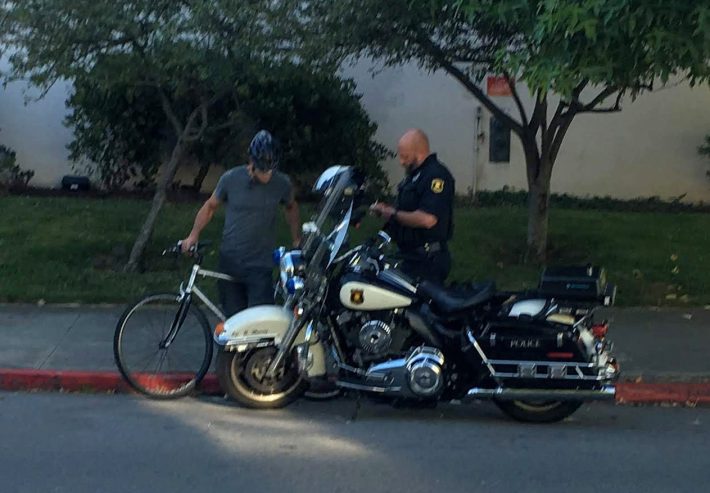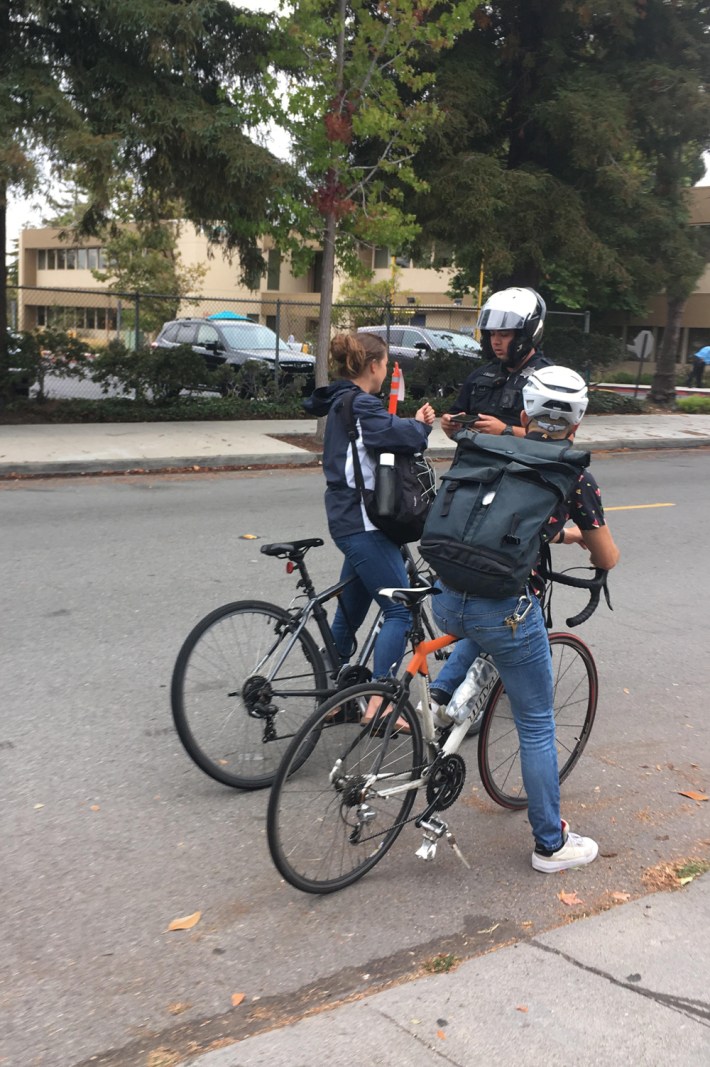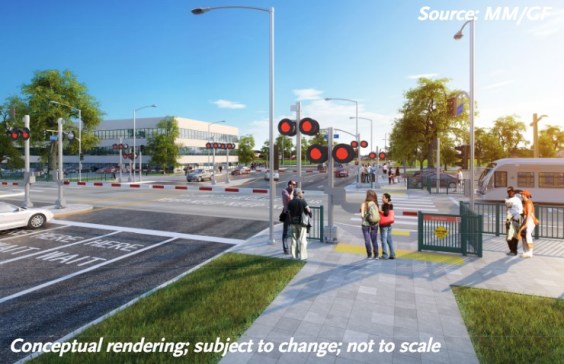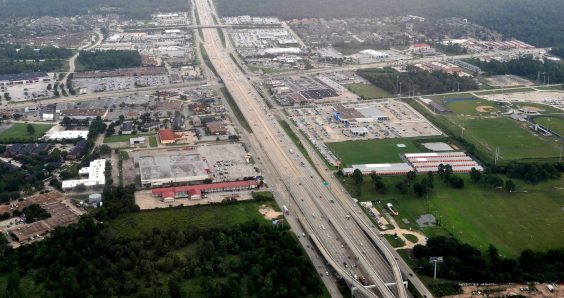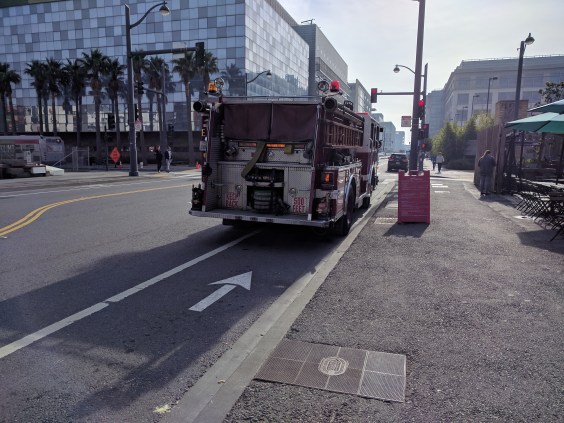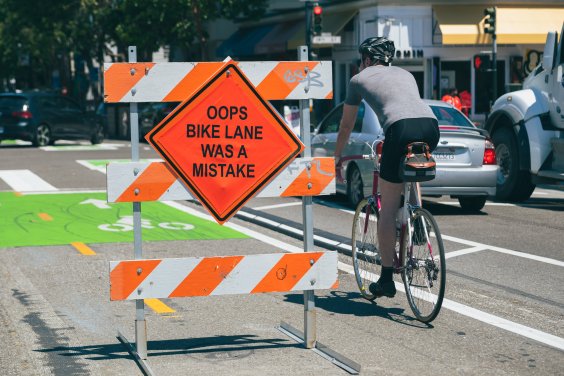Berkeley Police Are Ticketing Bicyclists for Running Stop Signs on Bicycle Boulevards
4:09 PM PDT on September 10, 2019
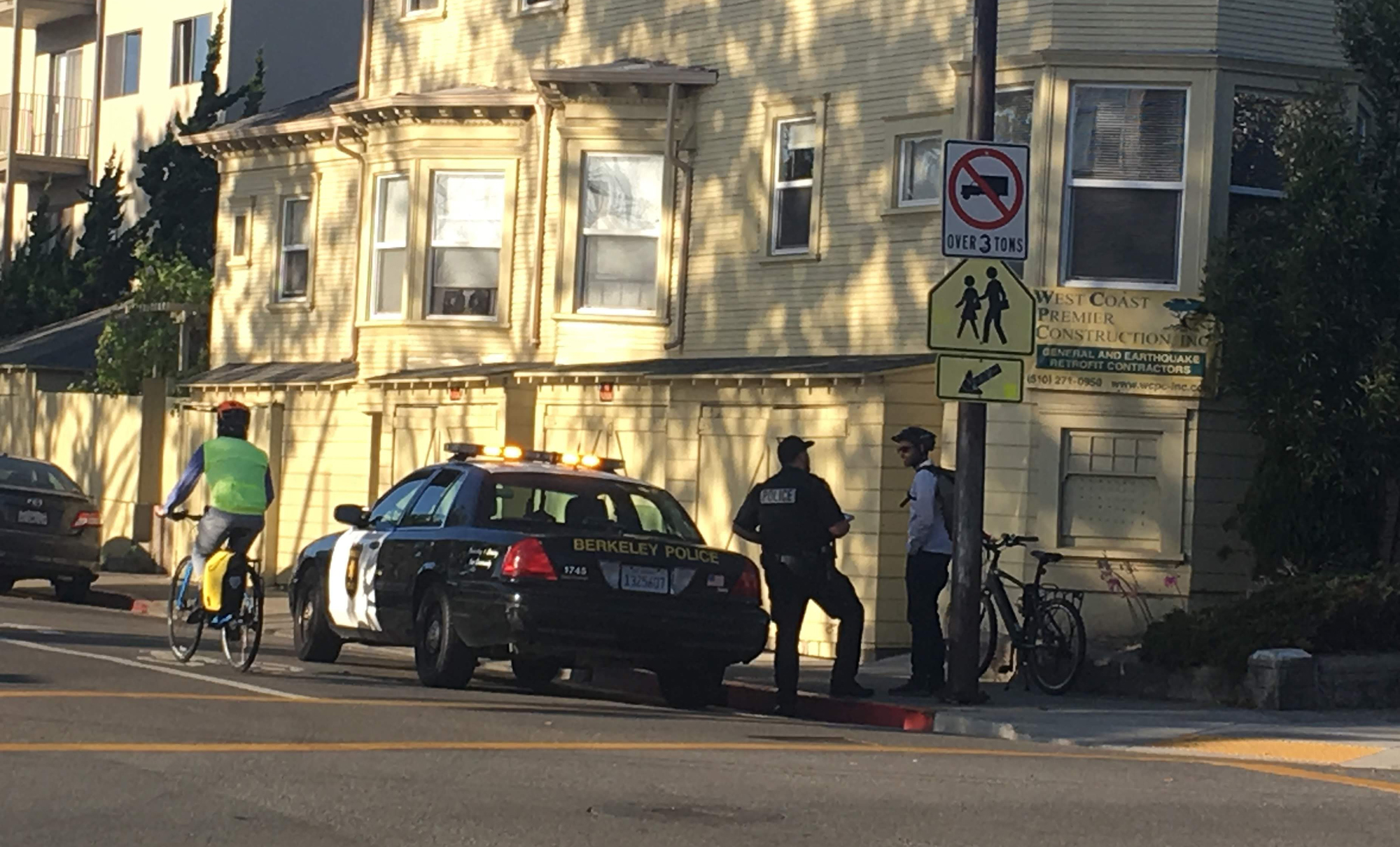
Berkeley PD ticket a bicyclist on Milvia St, a bike boulevard. Photo by Liza Lutzker
Note: GJEL Accident Attorneys regularly sponsors coverage on Streetsblog San Francisco and Streetsblog California. Unless noted in the story, GJEL Accident Attorneys is not consulted for the content or editorial direction of the sponsored content.
In Berkeley, a city with a relatively high share of people riding bikes for commuting, shopping, and pleasure, the police have been using federal enforcement grants to ticket bike riders who roll through stop signs on quiet streets with very little vehicle traffic.
Police departments around the state use federal traffic enforcement funds from the California Office of Traffic Safety (OTS) to conduct enforcement aimed at bicycle and pedestrian safety. The police departments frequently announce their campaigns in the local press, using boilerplate language based on the grant applications. Those announcements strive to achieve a balance between modes, saying the enforcement is aimed at changing the behavior of bike riders, pedestrians, and drivers.
But that "balance" creates ambiguity, and room for interpretation means misinterpretation is likely. What does "bicycle and pedestrian enforcement" mean? To some it means "giving tickets to drivers violating bicycle or pedestrian safety." To others it means "giving bike riders and pedestrians tickets."
The OTS simply supplies a list of goals the cities are to meet, such as reducing the number of bicyclists or pedestrians killed or injured. It's up to the individual police departments to decide how to go about meeting those goals.
The question that comes to mind: how exactly does ticketing careful bike riders increase safety?
In the last few weeks, there have been multiple reports of traffic cops ticketing bike riders on Milvia Street, one of Berkeley's bike boulevards. Traffic diverters discourage through car traffic but allow bikes to use Milvia as a through route into and out of downtown Berkeley. This stretch of Milvia also has a four-way stop sign at every block.
Liza Lutzker, a local advocate with Bike Walk Berkeley, has witnessed numerous bikes being stopped, "one after another, during the morning commute. Meanwhile, there were all sorts of vehicle violations" that could have been ticketed but were ignored by the police. Lutzker watched a truck pull through the barrier at Blake and Milvia, for example, and she saw cars pulling dangerous u-turns. But the police only pulled over bicyclists.
"These are not stops that are increasing safety," she told Streetsblog. "It was clearly targeted enforcement."
Chris Edmunds was one of the bike riders caught by the dragnet. He was riding a tandem bike with his daughter, taking her to day camp before heading to work on BART. Riding south on Milvia, he approached Blake Street, where car traffic - but not bike traffic - is blocked from continuing or turning onto Milvia south of Blake.
"I did my usual back and forth head sweep of the intersection and proceeded right through, as the intersection was clear of any other cars, bikes, or pedestrians," he said. "I would estimate I was going five miles an hour. . . I even saw the two officers who were parked on Blake, both on motorcycles. I really thought nothing of it, as my 'violation' seemed so innocuous. As I passed through the concrete planter barricades on Milvia, one of the officers turned on his siren and told me to pull over."
The cop wrote him a ticket for going what he estimated as seven miles per hour. He also lectured Edmunds about "needing to be extra careful" because he was riding with his daughter.
It seemed clear to Edmunds that the two cops were targeting that intersection. "I don’t know if it was just bikes or cars too," he said, "but it seems odd to do that enforcement on a bike boulevard if it’s not for bike targeting, especially when cars can’t even get through that intersection on Milvia."
Berkeley police spokesman Byron White would not say whether the enforcement on Milvia was targeted at bikes. He told Streetsblog the police decide where to deploy enforcement actions based on data from the department's traffic analyst about which intersections are the most dangerous and which generate the most complaints - presumably from local residents.
But the corner of Blake and Milvia doesn't show up as a high-injury spot in Berkeley, and the Milvia corridor itself, while it has problems, is one of the low-stress bike boulevards Berkeley has built specifically to encourage bicycling among residents and commuters within its borders.
It's not clear what the police hope to achieve by targeting bicyclists on Milvia. The police cite safety, pointing out that bike collisions have been rising in Berkeley and that between a third and a half of those collisions are the fault of the bicyclist. So far this quarter, according to White, Berkeley police have stopped 55 bicycle riders and pedestrians, and cited 36 of them for some violation. During the same time period, 143 motor vehicles have been stopped, and 106 citations issued.
"We are trying to prevent anyone from getting hurt," said White. "There are too many collisions in this city--as Public Information Officer, I've had to announce a major collision every month since January," he said.
But there is a big difference in safety risk between a bicyclist who checks to see if there is traffic and proceeds through a stop sign when it is clearly safe, and another who rides blindly through without glancing at cross traffic. Clearly, given Edmunds' experience, the police are not differentiating between the two.
Yes, current California law says that bicyclists must stop at stop signs. That doesn't mean it always makes sense. Before arguing about this in the comments, see this old article for a discussion of the physics of why this is so.
On Milvia, with a stop sign at every corner and relatively little traffic, for a bike rider to come to a complete "legal" stop at every block would be exhausting and pointless. A careful bike rider will always slow and check for traffic, but if there is not a single car on the cross street, the only reason to stop would be if there were a cop waiting to write a ticket - but only if you thought they might waste their time writing that ticket.
The point here is not to argue that stop sign laws shouldn't apply to bicycles (that argument can be found here), but to point out that writing bike riders tickets for what is basically safe and logical behavior will not increase safety for anyone. The impact on a careful bike rider of getting such a ticket will be anger, stress, and irritation, which will be a continuous anti-blessing as these feelings will come up every time they think about getting on their bike.
It certainly won't make riders stop at every stop sign on Milvia, or any other quiet street where it doesn't make sense to do so. Instead, they will: consider not riding at all, search for alternative routes that may be less safe but have fewer stop signs, stay away from Berkeley if they can, or even resort to driving when they could instead have ridden a bike.
And this is leaving out the expense of a ticket, which can be as high as $300 after court costs. This is no small amount, and it can be prohibitive for students or low-income people, of which there are many in Berkeley. If people have difficulty paying the fees, the costs can escalate quickly and lead to further consequences like the loss of a driver's license.
It's fair also to think about the difference in impact on a car driver vs. a bike rider for getting a stop sign violation ticket. The costs are the same. While the bike rider is not supposed to get a point against their DMV record, a car driver might. However, that car driver has the option of attending a day of traffic school to expunge that point.
The idea of traffic school is to take advantage of an opportunity to provide continuing education on safe driving practices to the drivers that most need it. Because there is no threat of a point for bike riders, there is also no incentive for them to attend traffic school.
California law allows cities and police departments to create a "diversion program" for bike riders who get tickets. Usually it gives them a monetary incentive: they can have their fine reduced if they attend an approved bike education course. It's an opportunity to educate bike riders, who are otherwise not required to prove any knowledge of the vehicle code at all.
But few places have these programs. The University of California at Berkeley does, but it only applies to university-issued tickets, not the surrounding city of Berkeley. Robert Prinz, education director for Bike East Bay, says he has tried to get the city of Berkeley to set up a diversion program, but initial interest has not resulted in any action.
"It's clearly not a priority," he said. "But if writing a bike ticket is a priority, then it has to be. You can't have it both ways - you can't say dangerous bike behavior is such a high priority that you have to spend limited enforcement money to write tickets for bicyclists, and then say that a diversion program isn't a priority."
Another issue here is street design. Even though Milvia is a bicycle boulevard, its design is hostile to bike riders if they are required to stop at stop signs. "If you were to put a stop sign at every intersection along, say, Martin Luther King Blvd," said Prinz, "How many drivers would quickly stop paying attention to them? It's a double standard. Berkeley has put three times as many stop signs on a parallel route that is a bike boulevard, and then it says: if you fail to observe that stop sign, even with a slow roll, we're going to ticket you."
Prinz suggests thinking about it the way the state approaches speed limits. "If 85 percent of drivers are speeding, the speed limit becomes unenforceable," he says. "Cities either have to raise the speed limit or change the design of streets to bring down speeds. Maybe we should apply that same thinking to bike boulevards and stop signs."
The ticketing is happening Berkeley, which has bike infrastructure that, while imperfect, is leagues ahead of other California cities. What happens in areas where the streets are even more dangerous and bike riders fewer? What goes on in cities where a larger percentage of bike riders are people of color, who are more likely to be subject to police enforcement actions?
If anything, this whole episode points out the problem with relying on enforcement to solve problems. While enforcement has a role to play, it also creates unintended consequences that undermine its own stated goals.
Because budgets are tight, in many areas the grants from OTS are the only funds police departments have to conduct any enforcement at all. But the state Office of Traffic Safety does not provide guidelines for police departments on how to use these grants, and requires only a quarterly report on a city's progress towards the general goals of each grant.
The mayor of Berkeley, Jesse Arreguin, responded to accusations on Twitter that he had "ordered" the police department to ticket bicycle riders. "I have no statutory authority to order the police to do anything," he wrote to Streetsblog. "My role is a policy maker."
But that role - as a policy maker - may be the only proper way to guide enforcement efforts. If the state won't do it, local communities have to take it on. San Francisco's "Focus on the Five" policy, with all of its problems, is one example of a data-driven policy that could actually affect safety. The Oakland Police Department's traffic division, for another, says it has pretty much stopped giving out tickets to bike riders and pedestrians, instead issuing warnings for violations.
The city of Berkeley has been working on adopting a Vision Zero action plan, which Lutzker of Walk Bike Berkeley says the police department has been an integral part of. "It's very clear that the number one most important part is that it will be data-driven," she said.
"There needs to be clear direction from the mayor to focus on safety and shift towards diversion, and actions need to be in support of city plans like the bike plan, the pedestrian plan, and the climate action plan," said Lutzker. "There needs to be a strong voice from leadership to say this is not the right direction."
And maybe the OTS needs to take a more proactive role by stating exactly what it means by "bicycle and pedestrian enforcement."
Streetsblog California editor Melanie Curry has been thinking about transportation, and how to improve conditions for bicyclists, ever since commuting to school by bike long before bike lanes were a thing. She was Managing Editor at the East Bay Express, editor of Access Magazine for the University of California Transportation Center, and earned her Masters in City Planning from UC Berkeley.
Stay in touch
Sign up for our free newsletter
More from Streetsblog California
Wednesday’s Headlines
Cash incentives can change transportation habits; Safer streets need investment; Suburbs don't want to support public transit; Depaving; More
San Fernando Valley Bus/Bike Updates: G Line, Roscoe Bus Lanes, Laurel Canyon Bike Lanes
Short newly protected bike lane on Laurel Canyon Blvd, extensive NSFV bus improvements under construction this month, and scaled-back G Line plans should get that project under construction this summer
How to Fight a Texas-Sized Freeway Battle
A new book explores how Texas advocates are fighting back against destructive highway expansions. But what happened to those projects since it was sent to the printer?
S.F. Fire Apologizes for Tweeting About Imaginary Bike Rule
There is no rule in California that says cyclists have to ride single file
Valencia Merchants to SFMTA: We Want Curbside Protected Bike Lanes
Valencia merchants association strengthens support for getting rid of the failed center-running bike lane and replacing it as soon as possible with curbside protected lanes
